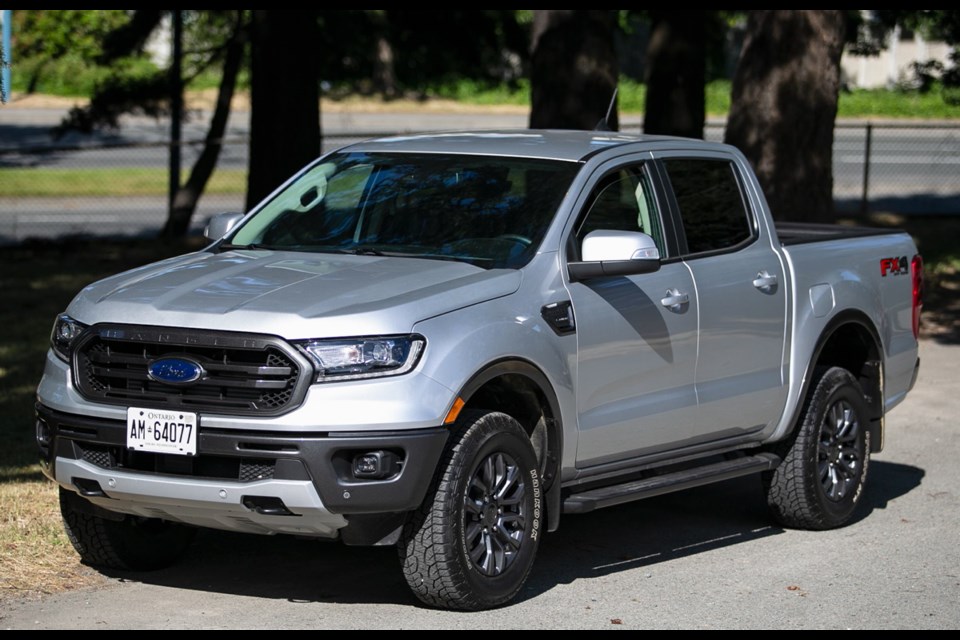Ford is back in the saddle again in the mid-sized truck segment with the reintroduction of the 2019 Ford Ranger.
The Ranger nameplate has been used by Ford since 1958. It was first applied to Ford’s compact pickup truck in 1983 (replacing the Ford Courier).
Ford discontinued the Ranger in 2011 in North America, arguing that the compact truck was redundant and consumers were easily serviced by its full-size F-150 instead.
Ford however, commenced production of a mid-sized replacement in the same year. That truck was manufactured and sold around the globe, with the exception of North America.
The competition was more than happy with Ford’s decision. General Motors launched the Chevrolet Colorado and GMC Canyon, Toyota and Nissan continued with the Tacoma and Frontier, respectively.
No official reason has been given for Ford’s reversal and decision to re-enter the market, but I bet it might have something to do with the competition’s success since Ford’s departure.
The 2019 Ranger is quite different than the truck it replaces.
It has grown in size, from compact to mid-size. You can no longer order a two-door standard cab. There is no V-6 engine option.
Even with all the changes, the Ranger should still prove more than capable to go bumper to bumper against all the current contenders in the field.
The range starts with a SuperCab, a configuration that carries over from the previous generation. You get four seats and rear-hinged back doors (but the front doors need to be open first).
I drove a SuperCrew, with conventional rear doors and capacity for three passengers on a rear bench seat (which folds up to increase cargo capacity).
If you are frequently carrying adults, this is the configuration to choose.
To keep the overall vehicle length reasonable, Ford equips the SuperCab with a six-foot box and the SuperCrew with a five-foot one.
There is only one engine available — a turbocharged 2.3-litre four-cylinder producing 270 horsepower and 310 pounds-feet of torque. That last figure is significant. It easily produces the most torque among its competitors (the Tacoma’s V-6 maxes out at 265).
Secondly, it produces its maximum pulling power at 3,000 rpm. Not surprisingly, Ford says that the Ranger can tow 3,403 kilograms (7,500 lbs.) or carry up to 748 kg (1,650 lbs.).
Power is delivered to the ground via a 10-speed automatic transmission (borrowed from its big brother, the Ford F-150).
In the U.S., you can still order a Ranger in two-wheel drive. In Canada, all Rangers are 4x4.
The engine is a willing performer, with excellent acceleration and almost imperceptible gear shifts. Turbo lag is minimal.
Although the competition can be had with more horsepower, the Ranger counters with better fuel economy. Its 11.3 litres per 100 km in the city and 9.8 on the highway is impressive for this vehicle segment. In the city, the vehicle’s stop-start function helps the Ranger sip rather than guzzle gas.
My tester had the FX4 off-road package, which would be of interest to those who like to get off the beaten path. It had a tuned suspension, off-road rubber, skid plates, electronic locking rear differential and a terrain management system.
While the Ranger is all-new to us, the design has been around for a number of years overseas. It is most noticeable in the cabin. While there is nothing wrong with it per se, it does not stand out, either. Some of the instruments, knobs and switches look generic and can be found in various Ford vehicles.
One standout in an otherwise average interior is the Bang and Olufsen 675-watt sound system with 10 speakers. How Ford managed to convince this well-known speaker manufacturer to team up with them is a mystery, but its inclusion (in the Lariat trim package) is a bonus for drivers who appreciate their music.
The audio system also has a Wi-Fi hotspot for up to 10 devices, up to 15 metres outside.
Ford’s Co-Pilot 360 is a suite of safety features that includes pre-collision assist with automatic emergency braking and blind-spot warning for both truck and trailer.
Ford was correct to reason, eight years ago, that the compact Ranger was redundant. But what they realized in the time away from the segment was that people still wanted something smaller than a full-size truck. Today’s mid-sized trucks are dimensionally about the same size as yesteryear’s full-sized ones.
In the countryside, that size may not be an issue, but if you ever drive (or try to park) in a city, every less millimetre counts.
Welcome back, Ranger, we missed you.
THE SPEC SHEET
Type: Mid-sized pick-up, front engine, 4x4
Engine: Turbocharged 2.3-litre, 270 hp at 5,500 rpm, 310 lb.-ft. of torque at 3,000 rpm
Transmission: 10-speed automatic
Dimensions (mm): Length, 5,354; width, 2,179; height, 1,816; wheelbase, 3,221
Curb weight (kg): 2,014
Price (base/as tested): $42,289/ $51,309 (includes $1,800 freight and PDI and $100 AC tax)
Options: Lariat package $3,000, FX4 package $1,400, splash guards $150, floor liner $170, running boards, $700, trailer tow package $600, sport appearance package $500, spray-in bedliner $600
Tires: 265/65 R17 off-road tires
Fuel type: Regular
Fuel economy (L/100km): 11.3 city/ 9.8 highway
Warranty: Three years/60,000 km new car, five years/100,000 km powertrain and roadside assistance



